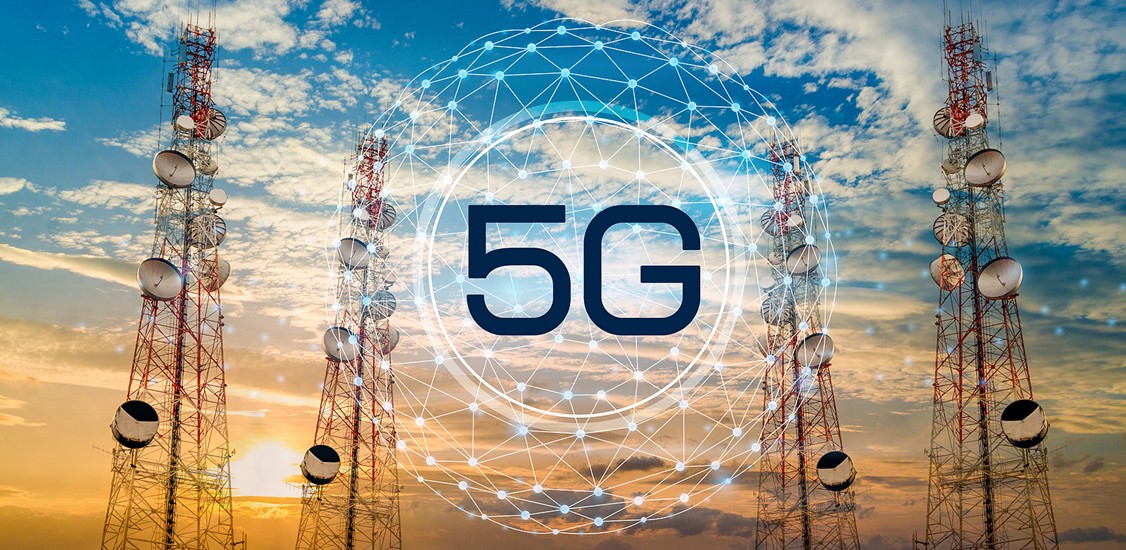5G rollout was the top priority for major telecom companies as 2020 began. The pandemic put a wrinkle in those well-laid plans as travel restrictions took hold, supply chains were disrupted, and telecoms scrambled to shore up existing networks to meet exploding demand for residential bandwidth. But the delay was just a temporary blip; the pandemic underscored the need for 5G.
Rollouts have accelerated over the past six months to meet that rising demand, requiring more resources, installers and technology in the field. Companies that supply technology to telecoms for 5G rollout work have experienced a corresponding uptick in demand as carriers seek new ways to augment their workforce while keeping workers safe, increasing efficiency and controlling costs.
Drones are a major part of the equation now since a growing number of telecoms use them to do inspection work and decrease the costs and risks associated with tower climbing. But drones paired with real-time collaboration capabilities and automation can supercharge 5G rollout in at least three specific ways and telecoms that use a platform to enable teamwork and automation will be ahead of the game.
Telecom use cases for drones and collaboration tools
Leading telecoms like AT&T have been using drones for several years to make cell tower inspections safer. According to drone program information the company made public [PDF] in 2018, drone use can eliminate up to 30% of climbs and help inspectors determine what repairs are needed and which equipment and tools crews will require before they climb a structure.
Now that top telecoms are comfortable with using drones, they’re expanding use cases to include site surveys, gather precise measurement data via drones and identify equipment onsite to prepare for incoming crews. Pre-engineering is an increasingly popular use case and some companies are now doing audits and close-outs with drones, which improves efficiency by identifying any necessary adjustments while crews are onsite.
In each case, pairing drones with collaboration and automation tools saves telecoms time and money by minimizing trips to tower sites and reducing the number of structure climbs. With a robust collaboration and automation platform, telecoms can also build digital twins of existing towers to generate data that can be shared internally and externally for upgrades, maintenance and training purposes.
Technology to speed disaster recovery - and keep rollouts on track
When telecoms have a platform where they can store data and perform advanced analytics, they can leverage information on tower site equipment and cross-reference it with other data sources to speed recovery when disaster strikes. For example, leading telecoms used drones to survey sites remotely in the aftermath of Hurricane Ida, bypassing blocked roads for a view of the damage.
Telecoms in disaster recovery mode also cross-referenced windspeed data with tower site information to prioritize repairs and conduct visual inspections via drones to see what equipment could be salvaged and what had to be replaced. This allowed them to assess the magnitude of the damage quickly and rush equipment to priority sites to restore service.
The ability to recover from a disaster quickly helps telecoms stay on track with their 5G rollout plans. With data from drones and other sources like weather information and public data on road closures on a collaboration platform, telecoms can bring subject matter expertise to restore service fast and maintain 5G project cadence.
Analytics and automation for next-generation efficiency
The telecom sector is now beginning to tap the potential of the data it captures via drones and reap the benefits of more accurate metrics. The old-school, error-prone method of recording measurements on legal pads and transcribing the data into spreadsheets stored on hard drives is being replaced by images with highly accurate measurements stored on a shared platform in the cloud.
Now, data that could not be verified before can be validated and analyzed via image analysis. Errors like transposed numbers can be virtually eliminated, omissions from inspection data can be significantly reduced, and image analysis can fill in gaps that previously required new inspections. With accessible data, telecoms can maintain and improve site assets with unparalleled efficiency.
Automation will extend telecom efficiency even further as companies use artificial intelligence to complete close-outs and verify work using uploaded images. By making in-person site trips less frequent while ensuring data accuracy and reliable construction, automation is lowering the cost of 5G deployment, which eliminates a barrier to rapid rollout.
Drone deployment is an important first step that many telecoms have already taken. Now the leaders in the 5G field are using the data they capture via drones in innovative ways, blending it with other data sources and providing access so teams from around the world can work together seamlessly to improve quality and efficiency. 5G rollout can be accelerated efficiently using real-time collaboration and automation.




















